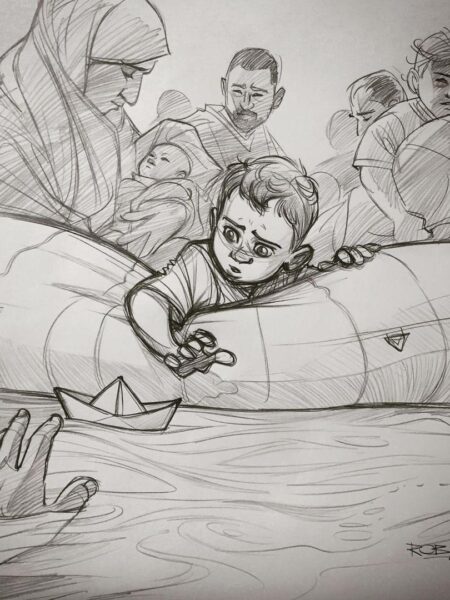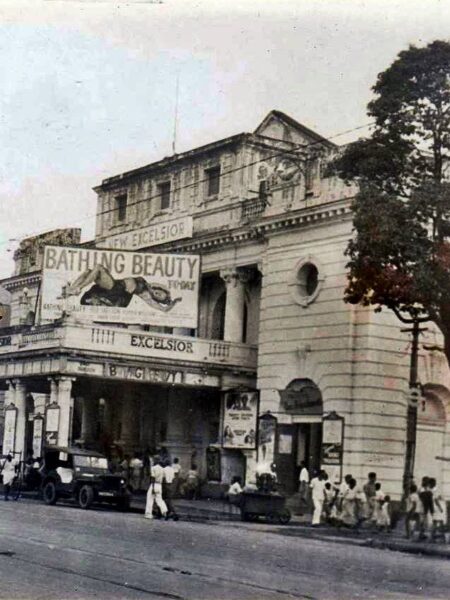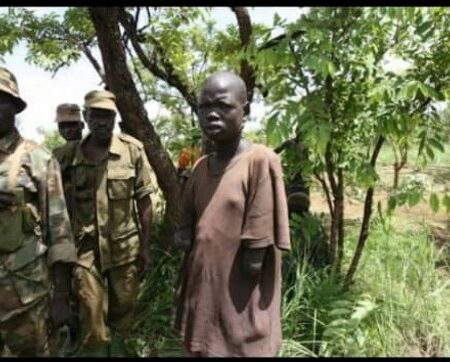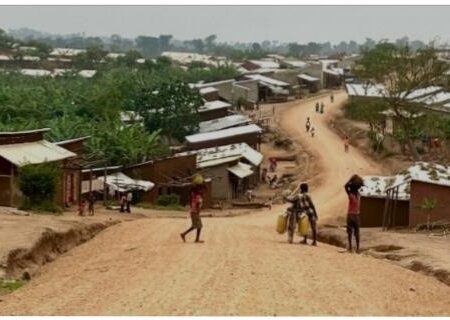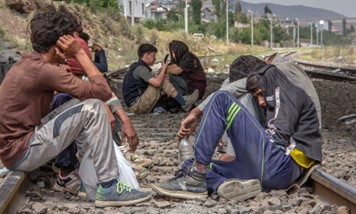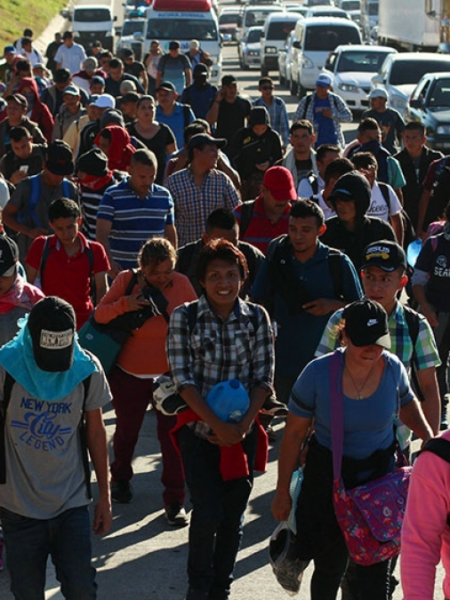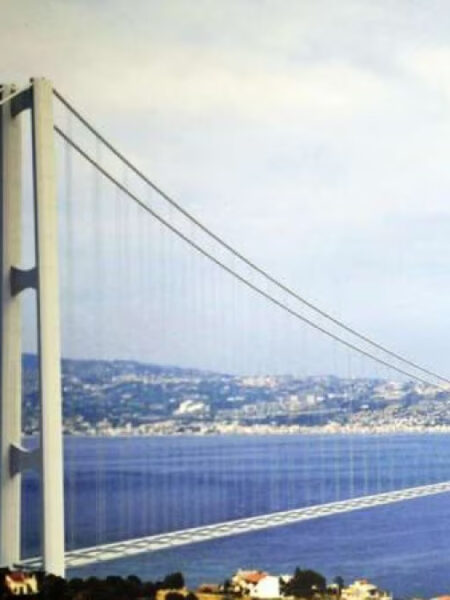“There was the sensation of living a crazy thing. You felt that there was a piece of history – even local – that was being written in Briançon, and that you were part of a whole.”[1]
Briançon is a French commune of 11,000 inhabitants nestled in a valley in the Hautes-Alpes department, at an altitude of 1,300 meters, in the Écrins massif.

But what makes it special, both geographically and historically, is that it is located only 15 km from the Italian border.

This border area has always welcomed migrants coming across the border or brought from elsewhere in France, including Italians, North Africans, Portuguese, Eastern Europeans and Turks.
It began to be concerned by the “migration crisis”[4] in November 2015, following the dismantling of the “jungle”[5]. The city of Briançon agreed to host 21 migrants from Calais, de-dublined[6] for the occasion, in a Reception and Orientation Center (CAO[7]). Then, in November 2016, the town welcomed 24 Sudanese and Chadians from the Parisian Stalingrad camp[8] – who were not initially de-dublined – in a second CAO. These shababs[9] quickly integrated, and more than half still live in Briançon today.
It was in 2015-2016, but especially in 2017, that migrants, called “the castaways of the mountain”, began again to cross the Echelle pass[10]. These were single men, 50% of whom were minors, who crossed the Mediterranean, from West Africa, often coming for economic reasons, as well as Sudanese and Chadians. From 2018, the crossing is done more through the Montgenèvre pass[11].


In 2019, with Italian Minister of the Interior Matteo Salvini[14] having more power in Italy, some exiles who had stayed for years in “campos” in this country also decided to cross the border.
Also in 2019, the nationalities and profiles of the exiles began to change, with many Afghans, Iranians, Syrians, and Iraqis, often with families, as well as North Africans.
Between August 2017 and February 2020, 10,000 migrants would have crossed the border. For most of them, Briançon is not a destination, but only a stage.
If the border is above all a barrier, here, it is not the rejection of migrants that will be of interest to us, but, on the contrary, the way in which the border can be a refuge, an airlock, a place for respite before they carry on the rest of their journey, often taking advantage of local solidarity.
The inhabitants of Briançon, because of the geographical situation of their city, were thus confronted, in spite of themselves, with these arrivals:
“We are a city where it fell on us (…) And when you have this situation in front of you, either you act as if you had not seen anything, you change street and you say: I cannot, I do not have time; or you give a little of your time, and then, sometimes, a little more”[15].
It is interesting to study this in the case of the border area of the Briançon region, adopting a “history from below” perspective. Indeed, the “small immigration environments” have often been neglected by migration studies, whereas the reception initiatives put in place could inspire many others.
I intend to study this history in a rather contemporary way, focusing on the period from the so-called “migration crisis” of 2015, and especially 2017. However, I will provide older historical background, when necessary.
To carry out this research, I spent a month in Briançon, volunteering at the Refuge Solidaire[16] association. I was also able to conduct three interviews[17] and consult local archives.
Solidarity with foreigners before the arrival of the “castaways of the mountain”
Since the 19th century, notably for Italian migrants, pilgrims, and soldiers, and then for tourists, refuges and hospices were built at the foot of the passes, notably the “Napoleon refuges”. These establishments were managed by the military, by religious people or by the French Alpine Club (CAF[18]) and offered refugees frugal meals as well as beds.
More recently, some associative structures that help foreigners already existed even before 2017. In particular, Self-Help Association for Development (AEDA[19]) provided foreign workers with professional, social and administrative assistance between 1988 and the early 2000s. Reception mission for foreigners (MAPEmonde[20]) then replaced it, in 2003, within the Youth and Culture Center (MJC[21]) of the Briançonnais, focusing on reception, individual support and integration.
Moreover, at the beginning of September 2015, after the diffusion of the photo of Aylan Kurdi, a child washed up on a Turkish beach, a local, Marie Dorléans, launched an appeal on social networks and gathered 200 people within 48 hours in Place de l’Europe[22]. From this mobilization was born a collective called “Pas en Notre Nom”[23], which then became an association, “Tous Migrants”[24], consisted of about thirty volunteers. It focuses on advocacy with public authorities, legal actions, awareness, communication and events. On March 5, 2016, Tous Migrants gathered 500 people in an awareness day. This association has received several awards, including the special mention of the French Republic’s Human Rights Award in December 2019.
Citizen mobilization with foreigners increased in 2015 – 2016, with the reception of the two CAO, in HLM[25] housing, managed by MAPEmonde which also provides accompaniment. Many associations such as the Red Cross, Secours Catholique[26] or Secours Populaire[27] as well as public services were mobilized. The shababs have quickly integrated, notably through French classes, soccer games, ski or hiking outings. The municipality, which joined the “Ville solidaire pour l’accueil des réfugiés”[28] scheme in 2015 (and the National association of welcoming cities and territories (ANVITA[29]) in 2019), is very involved: it centralized volunteer proposals, made the shababs of the first CAO honorary citizens of the city, etc. The second CAO had a more complicated course since the State refused to dedublin the exiles. These protested with a hunger strike (April 2017) and a march to the prefecture of Gap[30] (June); and the commune offered them republican sponsorships. The CAO is closed, the subsidies to the MJC are lowered and some exiles are placed in CRA[31], before ending up being de-dublined. The history of these CAOs “was a key stage in the mobilization of citizens”[32].
The beginnings of mobilization after the first crossings
With the arrival of the “castaways of the mountain”, the need for local solidarity was quickly felt, since the State did not fulfill its duty to provide shelter – there are only six emergency[33] places for the municipality of Briançon, minors were left on the street. The citizens had to compensate for the state’s inaction – which suits the public authorities by “ensuring social and health peace”[34] in a tourist town.
Solidarity began with small individual gestures, such as leaving a light on at night or welcoming an exile into their home. “There was a little lady who lived at the entrance to Névache[35]. And she was the one who saw the first ones arrive, because in winter, there was light, they were knocking on her window. The first time, she was really scared (…) then after, she got used to it”[36]. Many inhabitants of Névache or Briançon have welcomed exiles in their homes, but this was not enough given the number of people.
As the MJC had a reception service for foreign populations, it is primarily towards it that the first exiles were directed. “And as a result, from 2015 to 2017, it worked like that, but not well”[37]. Indeed, the building was not designed for accommodation, and the exiles “slept in the library, in the day-care center, but the next day we had to decontaminate everything, etc.”[38] “And in fact, we arrived at a time when we had a huge number of arrivals, and it was no longer possible, and so afterward, we told people: you have to leave, you can’t stay here”[39].
Other exiles were directed to the Community Center for Social Action (CCAS[40]); and the town hall opened a municipal shower, provided meals in the open and helped pay for train tickets. Also in Névache, a room and later on tents were made available to house the exiles. The town hall of Briançon then made available “la maisonnette”[41], i.e. the janitor’s house next to the cemetery, with 8 places.
Le Refuge solidaire, the story of a welcome
However, the limits of such a system and the need to create an association dedicated to the reception were quickly felt, since people were sleeping in tents in front of the MJC. The Community of Communes of Briançonnais (CCB[42]) agreed to make available the former Republican Security Companies (CRS[43]) and mountain rescue premises, but an association was needed to manage it. On the advice of the Roya Valley[44] activists, it was decided that it was better to separate reception and advocacy. In July 2017, the Collectif Refuges solidaires[45] (a nod to the CRS) was thus born. An NGO was needed to co-sign the agreement, and Doctors of the World (MdM[46]) agreed, “and so there was a tripartite agreement between the CCB, the association Refuge solidaire and MdM”[47], which only became bipartite in June 2018. “We opened on July 27, 2017, and, by August 15, we were hosting 100 people”[48].

“The mission of the Refuge is to welcome unconditionally all people who have just crossed the border and arrived in Briançon”[50]. The Refuge is an emergency shelter, which normally only lasts a few days, that is, the necessary time to regain strength. The “daily life” section provides services such as cooking, cleaning and laundry. A “reception” unit also helps exiles with their formalities, helping them obtain train tickets and taking them to the PASS[51].
The media coverage quickly attracted the support of NGOs such as Emmaüs, Secours Catholique and the Fondation de France[52], which financed staff positions, civic services and internships. Some neighboring municipalities also provided support, such as Villar-Saint-Pancrace[53] or Briançon, which delivered meals.
At the same time, the Refuge has become more structured, with a board of directors elected in October, and each task has been better organized. In addition, the kitchen, initially external (on the grounds of the parish of Sainte-Thérèse) was integrated into the building in September.
The Refuge solidaire quickly became the Refuges solidaires, with the opening of annexes, notably an apartment in Guillestre[54] for families.
Although the CRS premises had its advantages – in particular its location in the town center, which allowed for greater integration into local life, visibility and autonomy for the exiles – it quickly became out of date. Indeed, it was approved for 21 individuals and has periodically welcomed more than a hundred. In 2020, the overcrowding of such a dilapidated space led to insalubrity and promiscuity, which includes dirt, mice, wet mattresses in the middle of the kitchen, collapsing ceilings, dangerous use of the kitchen, spillage of stocks, propagation of Covid, violence, dirty dishes accumulating, lack of sanitary facilities. The overcrowding became so bad that some exiles had to sleep outside, along the MJC and even under the porch of the nursery school. In addition, the agreement with the CCB had not been renewed, and the Refuge remained without an agreement.

In 2020, a right-wing mayor was elected (Arnaud Murgia[56]) and became president of the CCB. In a letter dated August 26, he expressed his refusal to renew the agreement and the need to “free” the building, with an ultimatum of October 28. This decision received a lot of media attention: “I sent a press release to the France Media Agency (AFP[57]), and the same evening, I received a phone call from a member of the Board of Directors: Pauline, tomorrow at 8 a.m., Le Monde and Libération[58] are coming”[59]; and it led to a new volunteer dynamic.
A “beautiful project” was then set up: the purchase of a building. 306 people – individuals, foundations and associations – got together to buy a building, finally a former sanatorium, on the heights of Briançon: the new Refuge. The building is managed by a separate association, founded for the occasion, the Terrasses Solidaires[60]. It is a third place: if the Refuge occupies 90% of the premises, other associations such as the medical unit of Médecins du Monde, the association Eko[61] or the collectif maraudes occupy it. The Refuge has also become institutionalized; and there are currently almost ten employees.

However, the new Refuge also quickly reached saturation: in October 2021, in a building designed for 60 people, there were more than 200, and the volunteers were exhausted. The board of directors then decided to symbolically close the Refuge. All the exiles moved into the station concourse, and meals were taken down every day. As the police were more and more present, the exiles, with the agreement of the priest and the bishop, moved into the church. The State then decided to act and chartered buses to Paris.
Even today, the Refuge regularly exceeds its capacity – it is common for it to host at least 100 people. In winter, an annex of the Refuge Solidaire is set up on parish land, in a tent donated by MSF. The parish hall of Sainte-Thérèse also provides about 20 beds.
It should be noted that there are debates within the Refuge between a purely humanitarian logic and a militant action, which can create tensions between the volunteers.
It should also be noted that there are reception centers on the other side of the border for those who have not yet crossed or have been turned back. In Bardonecchia[63], the NGO Rainbows for Africa (R4A[64]) had opened a room next to the station of Bardonnecchia. In 2018, in Claviere[65], No Border[66] activists occupied the church’s parish hall and named the squat “Chez Jésus”[67], which was evicted in September. Another squat opened, the Casa Cantoniera[68], but was also evicted. A more institutional shelter called Fraternità Mass[69] was opened in Oulx[70] by Jesuits.
The lack of long-term accommodation solutions
The last point to note is the lack of long-term reception structures for exiles wishing to stay in Briançon. In 2017, the establishment of a Welcome Briançon network over a period of four months, with a maximum of one month in each host family, was a relative failure. The maisonnette, which had been used for long-term reception since the opening of the Refuge, was taken over by the new municipality. The Bessoulie house, in Serre-Chevalier, offers longer term accommodation. The squat Chez Marcel[71] also has an interesting and experimental track record. Opened in 2017 by activists and exiles, this self-managed, militant and multicultural space has lasted this long thanks to an inheritance problem on the building. Nevertheless, there are socio-cultural conflicts and alcoholism problems, as well as a tension between a reception place and a self-managed place.

Maraudes and mountain rescue
In addition to the welcoming, the dangers of the mountain (hypothermia, frostbite, avalanches, falls, loss, etc.) and the few victims made it necessary to set up a form of mountain rescue.
Indeed, if the mountain rescue in France is normally assured by the High Mountain Gendarmerie Platoons (PGHM[73]), when they are called by exiles in the Briançonnais, the high mountain gendarmes come with the Police At the Borders (PAF[74]). They rescue the person but, if they are i not considered to be in real danger, they send them back to Italy.
The first citizen initiatives were of a preventive nature, with the installation of signs in several languages to warn of the dangers; as well as distribution of similar leaflets in Italy.
However, after the frostbite on Mamadou’s feet in 2016[75], some people from Briançon, mostly mountain professionals, decided to set up marauding operations at the Echelle Pass in the winter of 2016-2017.
They acted in a humanistic principle, according to which no one, regardless of skin color or nationality, should die in the mountains.
At night, in pairs, with their backpacks filled with warm clothes, tea and food, these citizens travel the mountain to collect the exiles, and then, once at the bottom of the mountain, transport them by car to the Refuge. They travel on foot, by ski touring or snowshoeing. However, they are careful never to cross to the Italian side of the border, so as not to be qualified as smugglers.

This initially very informal network has been structured into a collective, the “collectif maraudes”[77], which organizes marauding and takes care of the training of new volunteers.
In the winter of 2017-2018, the maraudes began to move to the Montgenèvre Pass. Marauding was also implemented in the summer, although at a lower frequency. A mobile unit of MdM has also begun to conduct marauding, with health professionals.
However, marauding in a pass served by an international road, or in the summer when there is no snow, has led some volunteers to question their usefulness.
Another problem arises: that of the instrumentalization of the marauding activities by smugglers, who sometimes leave migrants next to the border, leaving them the telephone number of certain marauders for 250 or 300 €.
It is also worth noting the existence of marauding open to people outside the collective, for the purpose of awareness and advocacy. Thus, on December 17, 2017, Tous Migrants organized a “solidarity ropes” initiative at the Echelle Pass, mobilizing 350 people. Other solidarity marauding events have been organized in Montgenèvre, such as on March 15, 2019 or March 7, 2020.

Conclusion
In conclusion, Briançon, a border zone and historical passage route for migrants, has been for five years one of the key points of passage to France of the “migratory crisis”.
The French state has done everything to try to close the border, without success, but with contempt for human rights and lives, by rejecting and criminalizing the exiles. The situation in Briançon, tragic as it is, is unfortunately similar to that of many other borders: “this policy is applied to all border points in the same way, with the same violence, the same denial of human rights, the same disrespect for the human person”[79].

However, in Briançon, an important solidarity has been set up, on both sides of the border, to rescue and welcome the “castaways of the mountain”.
But who are the volunteers, one may ask? At the beginning, they were mainly local volunteers, many of whom already knew each other. It is estimated that 20% of the town’s inhabitants were involved in one way or another in helping the exiles. However, the media coverage of the situation has attracted volunteers from outside, often younger ones. The number of local volunteers, meanwhile, has dwindled, in part due to burnout and Covid. “At one point, we had a hundred local volunteers at the Refuge (…) today, if we are at fift“en, that is the maximum”[81]. Today, the profile of the volunteers is very varied, in terms of age, gender and social, religious or political profile. We find Catholics as well as anarchists, communists or people from the Zone To Defend (ZAD[82]).
This mobilization is also part of a history of struggle in the valley, particularly against the construction of a freeway in the Clarée valley, against the closure of the mobilization service of the hospital, against the installation of high-voltage lines, against the TGV project, etc. “The score that Mélenchon makes is very important. “The score that Mélenchon made in the elections in the valley, it is part of a history.”[83]
It is finally important to note the exhaustion of volunteers and employees. For instance, before the move of the Refuge, the two employees had a burn-out. “The move was at the end of August, and in mid-August, I went on sick leave, saying: “I’m going to lose my skin…””[84].
In addition, dozens of solidarity activists have been arrested, prosecuted and even convicted for “solidarity crime”, i.e., for “helping illegal immigrants enter the country”. Thus, not only is the State not fulfilling its mission of reception, but it is trying to repress citizen solidarity.

To end this article, I would thus like to salute the mobilization of citizens who, despite the difficulties, commit themselves daily to the side of exiles.
“One day, everything that happens in Briançon will be part of the history books and they will speak of you, of us, of all of us, with pride”, said Sinaly Sidibé.
Bibliography
Adler Laure, « Les exilés », L’Heure Bleue, France Inter, 29/062022
Amnesty France, « En pleine montagne avec les personnes qui aident les réfugiés », Youtube, 1/03/2020
https://www.youtube.com/watch?v=_5a0oYbaA5w&list=PLxh2GCPGuglW1mdMcjMbtij07GtgKo8-u&index=3
Amnesty France, « Relaxe pour les « 7 de Briançon » », Amnesty International France, 10/09/2021
https://www.amnesty.fr/presse/paris—briancon-le-10-septembre-2021
Amnesty France, « Eclairage : coupables… d’avoir sauvé des vies ! », Amnesty International France, 1/032020
https://www.amnesty.fr/refugies-et-migrants/actualites/eclairage-coupables-davoir-sauve-des-vies
Augié Fabienne, « « Il fallait que j’aille sur les frontières » : récit », Empan 2019/4 (n° 116), 2019, pages 89-95
https://www.cairn.info/revue-empan-2019-4-page-89.htm
Bachellerie Sarah, « Réprimer les solidarités : La stratégie de la peur à la frontière italienne des Hautes-Alpes », Revue de géographie alpine, 108-2, 2018
https://journals.openedition.org/rga/7208
Bérard Mélanie, D’Est en Ouest, trajectoires et accueil, Editions Transhumances – MJC centre social du Briançonnais, 01/2016
https://mjcbcs.org/wp-content/uploads/2022/03/DEstenOuest.pdf
Besson Stéphanie, Trouver Refuge, Glénat, Hommes et montagnes, 09/09/2020
Borgnet Yann, « Guider ceux qui arrivent », Vacarme 2018/2 (N° 83), 2018, pages 43-48
https://www.cairn.info/revue-vacarme-2018-2-page-43.htm
Bouquet Brigitte, « Le délit de solidarité en débat », Vie sociale 2019/3 (n° 27), 2019, pages 187-200
https://www.cairn.info/revue-vie-sociale-2019-3-page-187.htm
Calame Claude, « La stigmatisation et l’exclusion de migrantes et migrants : une nouvelle forme de racisme ? », Communications 2020/2 (n° 107), 2020, pages 115-130
https://www.cairn.info/revue-communications-2020-2-page-115.htm
Carrel François, « Briançon : « L’expulsion de Refuges solidaires est une vraie catastrophe pour le territoire et une erreur politique » », Libération, 16/09/2020
Chaud Marianne, Mahenc Isabelle, Paul Eloise, « Accueillir », Un thé dans la neige, 2022
Donnarumma Maria Rosaria, « Le « délit de solidarité », un oxymore indéfendable dans un État de droit », Revue française de droit constitutionnel 2019/1 (N° 117), 2019, pages 45-58
https://www.cairn.info/revue-francaise-de-droit-constitutionnel-2019-1-page-45.htm
Fassin Didier, Levratto Nadine, Bringault Anne, Boyer Robert, « Opinions », Alternatives Économiques 2022/3 (N° 421), 2022, pages 73-77
https://www.cairn.info/magazine-alternatives-economiques-2022-3-page-73.htm
Flamant Anouk, Fourot Aude-Claire, Healy Aisling, « Éditorial : Hors des grandes villes ! L’accueil des exilé·e·s dans les petits milieux d’immigration », Revue européenne des migrations internationales 2020/2-3 (Vol. 36-2), 2020, pages 7-27
https://www.cairn.info/revue-europeenne-des-migrations-internationales-2020-2-page-7.htm
Fontana Jean-Loup, « Hospices et refuges : la sollicitude publique à l’égard des migrants dans les Hautes-Alpes au XIXe siècle », Migrations Société 2012/2 (N° 140), 2012, pages 93-104
https://www.cairn.info/revue-migrations-societe-2012-2-page-93.htm
Fontaine Laurence, « Le rôle de la fraude dans l’enrichissement des réseaux de migrants montagnards à l’époque moderne », Fraude, contrefaçon, contrebande de l’Antiquité à nos jours, 2007, pages 125-143
https://www.cairn.info/fraude-contrefacon-contrebande-de-l-antiquite-a-no–9782600010696-page-125.htm
Giliberti Luca, « La militarisation de la frontière franco-italienne et le réseau de solidarité avec les migrant·e·s dans la Vallée de la Roya », Mouvements 2018/1 (n° 93), 2018, pages 149-155
https://www.cairn.info/revue-mouvements-2018-1-page-149.htm
Granet-Abisset Anne-Marie, « Tisser du territoire : Les migrations frontalières entre Piémont et Briançonnais au cours des deux derniers siècles », Migrations Société 2012/2 (N° 140), 2012, pages 71-92
https://www.cairn.info/revue-migrations-societe-2012-2-page-71.htm
Hanus Philippe, « La zone frontière du Montgenèvre après 1945 : espace institué, espace négocié », Migrations Société 2012/2 (N° 140), 2012, pages 201-212
https://www.cairn.info/revue-migrations-societe-2012-2-page-201.htm
Hanus Philippe, « Les secrets d’une frontière, à Modane et dans les Alpes franco-italiennes, de 1860 à nos jours. Traces, patrimoines et mémoires », In situ, 38, 2019
https://journals.openedition.org/insitu/19971
Jacquey Bénédicte, « L’accompagnement des publics migrants par les associations », L’ENA hors les murs 2021/4 (N° 505), 2021, pages 62-64
https://www.cairn.info/revue-l-ena-hors-les-murs-2021-4-page-62.htm
Junca Ariane, « Les rescapés d’une nuit enneigée », Rhizome 2020/3 (N° 77), 2020, page 9
https://www.cairn.info/revue-rhizome-2020-3-page-9.htm
Kammerer Mariette, « Exil : Villes accueillantes », Lien Social 2019/3 (N° 1244), 2019, page 16
https://www.cairn.info/magazine-lien-social-2019-3-page-16.htm
Lazerges Christine, « Le délit de solidarité, une atteinte aux valeurs de la République », Revue de science criminelle et de droit pénal comparé 2018/1 (N° 1), 2018, pages 267-274
https://www.cairn.info/revue-de-science-criminelle-et-de-droit-penal-compare-2018-1-page-267.htm
Mahenc Isabelle, « Lombarde et Sirocco », Cinémathèque d’images de montagne, 2000
https://www.cimalpes.fr/Films-de-montagne-Lombarde-et-Sirocco-752-606-0-0.html
Maraval Bénédictel, Géraldine, Ismaïl Afifa, Coulange Julia, Ferreira Christophe, Ouhoud Élise, Simon Alain, Kherchaoui Vincent, Le collectif Enfance 31, La commission de mobilisation du travail social de l’Essonne, Langlet Marianne, Wyon Philippe, Caroline, Cécile, Claire, Louise, Marion, « Les voix de la colère », Lien Social 2020/22 (N° 1285), 2020, pages 5-30
https://www.cairn.info/magazine-lien-social-2020-22-page-5.htm
Moreau Karine, « La MAPEmonde : L’accueil des personnes étrangères dans les Hautes-Alpes », Hommes & Migrations 2013/1 (n° 1301), 2013, pages 174-177
https://www.cairn.info/revue-hommes-et-migrations-2013-1-page-174.htm
Mouzon Céline, « Un autre accueil pour les réfugiés », Alternatives Économiques 2016/2 (N° 354), 2016, page 24
https://www.cairn.info/magazine-alternatives-economiques-2016-2-page-24.htm
Mouzon Céline, « Tous Migrants, des citoyens solidaires », Alternatives Économiques 2017/3 (N° 366), 2017, page 61
https://www.cairn.info/magazine-alternatives-economiques-2017-3-page-61.htm
Mouzon Céline, « Aider un migrant, est-ce un crime ? », Alternatives Économiques 2018/9 (N° 382), 2018, page 56
https://www.cairn.info/magazine-alternatives-economiques-2018-9-page-56.htm
Nahapétian Naïri, « L’accueil digne reste encore loin », Alternatives Économiques 2016/12 (N° 363), 2016, page 69
https://www.cairn.info/magazine-alternatives-economiques-2016-12-page-69.htm
Paucot Hugues, Faucherre Nicols
« Barrer ou circuler : le paradoxe montagnard, l’exemple de Briançon et du col de Montgenèvre », Paris : Éditions du Comité des travaux historiques et scientifiques, 2019
https://books.openedition.org/cths/5925
« Pour que le Briançonnais reste un territoire solidaire », Gauche démocratique & sociale, 01/10/2020
http://www.gds-ds.org/pour-que-le-brianconnais-reste-un-territoire-solidaire-avec-les-exiles/
« Reconstruire la solidarité », Alternatives Économiques 2017/11 (N° 373), 2017, page 79
https://www.cairn.info/magazine-alternatives-economiques-2017-11-page-79.htm
Rinauro Sandro, Il cammino della speranza. L’emigrazione clandestina degli italiani nel secondo dopoguerra, Einaudi, 1/01/2010
Sadai Célia, « Migrants : questions de solidarité », Hommes & Migrations 2020/1 (n° 1328), 2020, pages 151-155
https://www.cairn.info/revue-hommes-et-migrations-2020-1-page-151.htm
Siestrunck René, « Faits divers, principe humanitaire et contrôle des migrants dans les Alpes du Sud (1850-1920) », Hommes & Migrations 2013/4 (n° 1304), 2013, pages 121-125
https://www.cairn.info/revue-hommes-et-migrations-2013-4-page-121.htm
Siestrunck René, Venus d’Ailleurs. Jalons pour l’histoire de l’immigration en Briançonnais, Val-des-Prés, Editions Transhumances, 2001, 69 pages
https://mjcbcs.org/wp-content/uploads/2022/03/venusDailleurs.pdf
Tazzioli Martina, «Towards a genealogy of migrant struggles and rescue. The memory of solidarity at the Alpine border», Citizenship Studies, 25:5, 2021, pages 603-619
https://www.tandfonline.com/doi/full/10.1080/13621025.2021.1923657
Un collectif de personnalités civiles et politiques, « Tribune : “Non à la criminalisation de la solidarité” », Libération, 26/05/2021
Vergnano Cecilia, « Des affects aux politiques contestataires. Des rencontres perturbatrices avec les migrants le long d’une route transalpine », Revue de géographie alpine 108-2, 2020
https://journals.openedition.org/rga/736
Vinck-Keters Aude, « Briançon : ville-refuge à l’heure de la criminalisation de la solidarité », Géographie, 2018
https://mjcbcs.org/wp-content/uploads/2022/03/Briancon-ville-refuge.pdf
Vollaire Christiane, « Une résistance issue de la réalité territoriale des migrations », Lignes 2022/1 (n° 67), 2022, pages 127-140
https://www.cairn.info/revue-lignes-2022-1-page-127.htm
Interviews
- Pauline Rey, former coordinator of the Refuge solidaire, currently in charge of communication at the Refuge solidaire, and who is writing a book on the Refuge (08/06/2022)
- Agnès Antoine, historical member of Tous Migrants, member of the Anafé, and coordinator of the support committee for the 3+4 in Briançon (09/06/2022)
- Marie Marchello, former city council member, who worked at the CCAS, volunteer in the kitchen at the Refuge solidaire for several years, wife of the director of the MJC (14/06/2022)
Footnotes
[1] Interview – Pauline Rey
[2] https://www.istockphoto.com/fr/photos/brian%C3%A7on
[3] https://evasion-online.com/carte-de-france/hautes-alpes-departement-05
[4] Increase, in the 2010s and particularly since 2015, of the number of migrants arriving in the European Union
[5] Shanty town and camp set up from the early 2000s in Calais, in the North of France, near the Channel, for migrants trying to get to the UK
[6] Meaning a person who obtains a derogation from the Dublin procedure, i.e., who is not obliged to apply for asylum in the first European country in which her or his fingerprints have been taken
[7] Centre d’Accueil et d’Orientation (Reception and Orientation Center): temporary accommodation structure for migrant implemented during the evacuation of the Calais Jungle
[8] Migrant camp in the North of Paris
[9] Young person in Arabic
[10] Pass in the French Alps at 1,762 meters above sea level, located six kilometers away from Italy
[11] Pass in the French Alps at 1,850 meters above sea level, 2,4 kilometers away from Italy, crossed by an international road opened even in winter
[12] https://www.flickr.com/photos/willj/2698570148
[13] https://commons.wikimedia.org/wiki/File:AsCy_col_de_Montgen%C3%A8vre_05-_final_rectiligne-_panneau_8_%25.jpg
[14] Italian politician, who leads the Lega party, a far-right party
[15] Interview – Marie Marchello
[16] (Solidarity Shelter)
[17] With Pauline Rey, former coordinator of the Refuge solidaire, currently in charge of communication at the Refuge solidaire, and who is writing a book on the history of the Refuge (08/06/2022) / With Agnès Antoine, historical member of Tous Migrants and coordinator of the support committee for the 3+4 in Briançon (09/06/2022) / With Marie Marchello, former city council member, who worked at the CCAS, volunteer in the kitchen at the Refuge solidaire for several years, wife of the director of the MJC (14/06/2022)
[18] French alpine club
[19] Association d’Entraide pour le Développement (self-help association for development)
[20] Mission d’Accueil des Personnes Etrangères (Reception mission for foreigners)
[21] Maison des Jeunes et de la Culture (Youth and culture center)
[22] Europe square, in Briançon
[23] (Not in our name)
[24] (All migrants)
[25] Habitation à Loyer Modéré (Low-rent housing) : housing managed by a housing organization with partial public funding
[26] (Catholic Relief)
[27] (Popular Relief)
[28] (Solidarity City for the reception of refugees)
[29] Association Nationale des Villes et Territoires Accueillants (National association of welcoming cities and territories)
[30] Capital city of the Hautes-Alpes department
[31] Centre de Rétention Administrative (Administrative detention center) : detention center for foreigners who have been the subject of a deportation decision, pending their forced deportation
[32] Interview – Agnès Antoine
[33] 115: Social emergency phone number in France, which can sometimes provide emergency accommodation for homeless people
[34] Interview – Pauline Rey
[35] French commune in the Hautes-Alpes located right next to the Italian border
[36] Interview – Marie Marchello
[37] Interview – Marie Marchello
[38] Interview – Marie Marchello
[39] Interview – Pauline Rey
[40] Centre Communal d’Action Sociale (Community center for social action)
[41] (The small house)
[42] Communauté de Communes du Briançonnais (Community of communes of Briançonnais)
[43] Compagnies Républicaines de Sécurité (Republican Security Companies) : body of the National Police in France, specialized in the maintenance of public order
[44] French valley in the southern Alps bordering Italy, through which migrants passed after the southern border (Ventimiglia-Menton) was militarized. This valley was then in turn militarized, forcing the exiles to pass through Briançon.
[45] Collective Solidarity Shelters
[46] Médecins du Monde (Doctors of the world)
[47] Interview – Pauline Rey
[48] Interview – Pauline Rey
[49] https://voxeurop.eu/fr/refugies-entre-litalie-et-la-france-les-cols-de-la-solidarite/
[50] Interview – Marie Marchello
[51] Permanence d’Accès aux Soins de Santé (Permanent access to health care) : medico-social care units created to facilitate access for the poor and the people without papers to the hospital system
[52] The foundation of France
[53] Town in the district of Briançon
[54] Town of the Hautes-Alpes department
[55] https://voxeurop.eu/fr/refugies-entre-litalie-et-la-france-les-cols-de-la-solidarite/
[56] Les Républicains party
[57] Agence France-Presse (France media agency)
[58] Famous French newspapers
[59] Interview – Pauline Rey
[60] (Solidarity terraces)
[61] Association that tries to promote the making of low-tech material by refugees
[62] Personal image
[63] Italian town in the Susa Valley, in the Piedmont region, located on the other side of the Echelle pass from Briançon
[64] Rainbow for Africa
[65] Italian town in the Susa Valley at the foot of the Montgenèvre pass
[66] Transnational far-left network of collectives and individuals struggling notably for the abolition of borders
[67] (At Jesus)
[68] (Roadman’s house)
[69] (Fraternity Mass)
[70] Italian town in the Val de Suse from which it is possible to cross the French border either by going to Haute-Maurienne (by the mountain or by the Fréjus tunnel) or in Briançonnais (by going to Claviere then crossing the pass of Montgenevre)
[71] (At Marcel)
[72] https://www.lemonde.fr/societe/article/2020/09/16/a-briancon-le-maire-lr-veut-fermer-le-refuge-ouvert-aux-migrants_6052468_3224.html
[73] Pelotons de Gendarmerie de Haute Montagne (High mountain gendarmerie platoons)
[74] Police Aux Frontières (Police at the borders) : national police unit responsible for controlling immigration and borders in France
[75] Young Malian who suffered frostbite and had to have both feet amputated in March 2016
[76] https://voxeurop.eu/fr/refugies-entre-litalie-et-la-france-les-cols-de-la-solidarite/
[77] (Marauding collective)
[78] https://www.la-croix.com/France/Immigration/A-Briancon-Alpins-secours-migrants-2018-02-14-1200913812
[79] Interview – Agnès Antoine
[80] https://voxeurop.eu/fr/refugies-entre-litalie-et-la-france-les-cols-de-la-solidarite/
[81] Interview – Marie Marchello
[82] Zone À Défendre (Zone to defend): militant neologism designating a form of squat, most of the time in open air, to oppose a development project
[83] Interview – Agnès Antoine
[84] Interview – Pauline Rey
[85] https://www.flickr.com/photos/jmenj/41052880200
Images
https://www.istockphoto.com/fr/photos/brian%C3%A7on
https://evasion-online.com/carte-de-france/hautes-alpes-departement-05
https://www.flickr.com/photos/willj/2698570148
https://voxeurop.eu/fr/refugies-entre-litalie-et-la-france-les-cols-de-la-solidarite/
https://voxeurop.eu/fr/refugies-entre-litalie-et-la-france-les-cols-de-la-solidarite/
Personal image
https://voxeurop.eu/fr/refugies-entre-litalie-et-la-france-les-cols-de-la-solidarite/
https://www.la-croix.com/France/Immigration/A-Briancon-Alpins-secours-migrants-2018-02-14-1200913812
https://voxeurop.eu/fr/refugies-entre-litalie-et-la-france-les-cols-de-la-solidarite/

